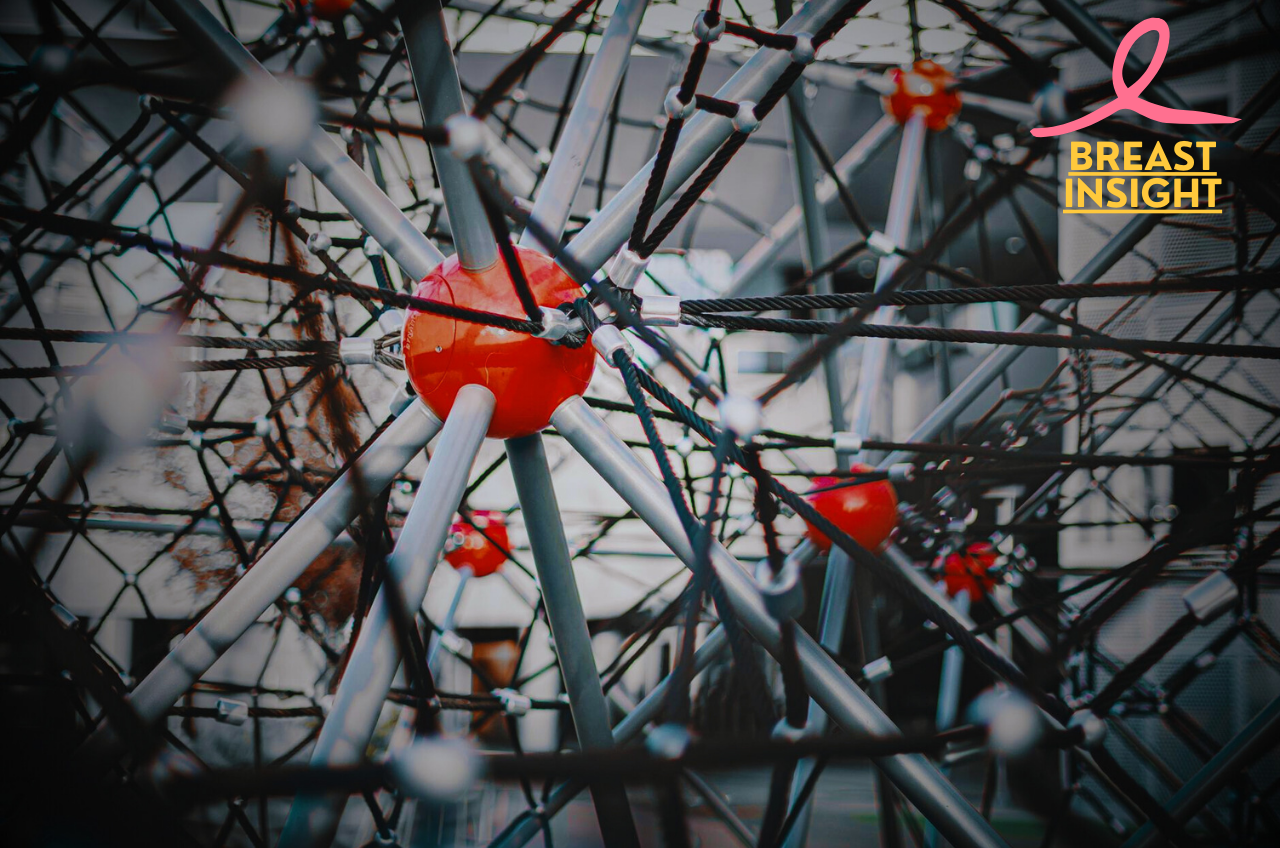You have ever noticed a lump on your arm and begun to speculate whether it could be a symptom of breast cancer? That would not be odd at all. Breast cancer metastasis usually spreads to the lymph nodes — these small bean-shaped body systems play a vital role in our body’s immunity. The disease itself and its treatments come when metastasis has reached those nodes. It could be devastating to know that the lymph node involved is of breast cancer.
When someone finally gets the answer of their concern, that knowledge becomes their power. From the understanding that will take control, everything begins from there. This new generation breast cancer treatment brings hope and a new future for patients with metastasis, going from innovative diagnostic procedures to the most innovative treatment strategies.
A complete manual about breast cancer Lymph Node Invasion will teach you how to approach this, what treatment options are possible, what their prognosis and survival chances are, and how you can cope with the diagnosis of this disease. For patients, caregivers, and all others who would like to know, this guide will give all the necessary knowledge for handling this hard topic of breast cancer.
Understanding Lymph Node Metastasis
Understanding Lymph Nodes and Their Importance
Lymph nodes are tiny, bean-shaped structures that function as an integral component of the human body’s defense system. They act as filters by trapping pathogens and abnormal cells, such as those in cancerous tumors. Breast cancer is particularly concerned with lymph nodes since these are usually the first place the tumor metastasizes outside the breast itself.
How breast cancer spreads to lymph nodes
Lymphocytes are generally spread within a network of thin vessels, called lymphatics that carry lymph from the tissue of the breast through the rest of the body. The metastatic spread of the tumor cells to the lymph node means their penetration through the vessel walls into surrounding lymphatics. Lymphatic metastasis means the invasion of one or several metastatic cells in some node or nodes of the lymph system.
Common locations of affected lymph nodes
Commonly involved with breast cancer are axillary lymph nodes, which are located in the armpit of the same side as the breast tumor. The nodes located in the supraclavicular and infraclavicular regions and along the breastbone are also involved.
Signs and Symptoms of Lymph Node
Involvement Lymphatic metastasis can sometimes go unnoticed; however, one can find a lump in the armpit with slight tenderness or pain, while some skin over the affected lymph node might also show signs of visible alteration. One should note that non-cancerous diseases may cause some of these symptoms.
Diagnosis of Lymph Node Metastasis
Physical examination techniques
Physical examination is frequently employed as the first step toward detecting probable lymph node metastasis. The doctor palpates the axilla for enlarged or hard lymph nodes and may also examine the supraclavicular and infraclavicular regions. Although not conclusive, this initial evaluation may indicate to doctors that a further workup is needed.
Imaging methods for detection
The imaging techniques for detection include ultrasound-directed needle biopsies that allow visualization of lymph nodes. On other occasions, if lymph nodes are enlarged by mammographic correlates, an MRI scan may be able to determine the axilla and adjacent to the breast tissue as well as the contiguous lymph nodes. PET-CT scans are utilized to identify regional distant metastases within lymph nodes beyond the axilla.
A biopsy procedure and its importance
Biopsy remains the gold standard in confirming any lymph node metastasis. In FNA, cells are taken out from the suspicious lymph nodes, as they are the first to be sampled. Core needle biopsy samples provide better information since they sample a larger tissue. SLNB is a minimally invasive procedure to identify and remove the first several suspect lymph nodes en route to the full, extensive surgery indicated in many instances.
Staging breast cancer with lymph node involvement
Lymph node status is critical not only in breast cancer treatment trials but also in the staging process. It occupies an important auxiliary role in the TNM classification of the number of affected lymph nodes and their location associated with breast cancer staging. Usually, stage II should have 1-3 positive axillary lymph nodes, but stage III generally presents with more extensive nodal involvement. Staging is critical for making treatment decisions and prognosis. With the wide scope of investigations, oncologists can offer specific treatment modalities for patients with lymph node metastasis.

Treatment Options
Surgery: Lymph node dissection
When breast cancer is beyond the breast, very often some sort of surgical management becomes involved. Axillary lymph node dissection (ALND) is one of those procedures where surgeons remove all compromised lymph nodes from the armpit area. The procedure not only allows for the removal of cancerous tissue, but also helps give information about staging and treatment consideration.
Radiation therapy targeting affected areas
Radiotherapy would be very often used after surgery to kill remaining cancer cell debris in the breast, chest wall, and adjacent areas including lymph nodes after surgery, in order to control both local and regional recurrence. It is done with the help of high-energy beams that literally kill any such cells. For the patient’s positive for lymph nodes, treatment may include the supraclavicular and internal mammary regions.
Systemic treatments: Chemotherapy and targeted therapies
Chemotherapy is commonly used in breast cancer cases with lymph node contributory factors. Generally high-potency medication, these drugs circulate through the body and destroy cancerous cells wherever they are present. Targeted therapies: HER2-directed treatments are usually implemented along with chemotherapy for certain breast cancer subtypes, helping make the most of the treatment effectiveness.
Hormone therapy for eligible patients
For hormone receptor-positive breast cancers, endocrine therapy is an important part of the treatment strategy. These drugs are termed as tamoxifen or aromatase inhibitors, and they either block estrogen’s effects on cancer cells or lower the amount of estrogen in the body, thus slowing down or stopping the growth of cancer. It is given across several years to lower the risk for recurrence.
Immunotherapy approaches
Though they may not be used widely yet, immunotherapy does show some promise in treating advanced breast cancers that have involved lymph nodes. This idea relies on immunotherapy, drugs that help rouse the immune system to spot and gobble up cancer cells.
Also Read This: Techniques to Prepare for (Bold Innovations Fighting Stage IV Breast Cancer)
Staging and Prognosis
TNM staging system explained
The TNM system is an international language we use to describe and grade breast cancer spread, with lymph node involvement. More specifically, it describes the size of a tumor, regional lymph node status, and the presence or absence of metastasis. For lymph node status (N), it considers the number of nodes involved and the locations of those nodes. In this coding system, N0 indicates no involvement of lymph nodes, while N1, N2, and N3 show graduated levels of lymph node metastasis.
Impact on overall breast cancer stage
Reasons for the overall breast cancer stage being impacted by lymph node involvement. Thus, positive lymph nodes have a huge impact on the overall breast cancer stage under consideration. Even small primary tumors can have their stage increased in the presence of positive lymph nodes. To illustrate, a small tumor with no lymph nodes involved would be Stage I, yet it might be Stage II or III, depending on the level of nodal involvement when positive lymph nodes are taken into account.
Survival rates and prognosis factors
The presence and extent of lymph node metastasis are among the most vital prognostic indicators in breast cancer. In general, node-negative breast cancer patients do better than node-positive breast cancer patients in terms of survival. Prognosis is dependent, however, on various factors, including tumor size, grade, hormone receptor status, and HER2 status. Modern therapies have improved outcomes, even for patients with lymph node involvement, but it should be borne in mind that the statistics for survival were based upon historical data and may not reflect the very latest treatments for breast cancer.
Managing Side Effects
Lymphedema: causes and prevention
Most often, it is lymphedema formed by treatment of breast cancer, which removes a node that develops this condition. Thus, lymph fluid gets accumulated in an arm or chest, and this leads to swelling and discomfort in that part of the body. Risk prevention should, therefore, be not to infect the arm, do not do injury to it, also watch your weight, encourage a gentle kind of exercise to drain the lymph, wear appropriate compression clothing and practice appropriate skin care to reduce the risk further.
Post-surgery care and recovery
Proper post-surgery care will lead to maximum healing. Thus, proper wound care, adequate arm exercises, and activity restrictions should be instructed by doctors. Gentle stretching improves the range of motion of the arm and reduces the chances of stiffening after surgery. Examine the wound properly. Inform the health team if the patient notices signs of infection or other unusual symptoms.
Management of treatment-related symptoms
Breast cancer treatments produce numerous side effects, including pain, fatigue, nausea, and others. Management involves medication; lifestyle modification and many complementary therapies are applied in managing them. Open and clear communication with the health team is also recommended when any symptoms arise. Eating a balanced diet, adequate rest, and support groups may reduce suffering in such cases.
Thus, good management of complications will allow the patient to channel all their energies into recovery and good health. The last part will give a follow-up and observation of the breast cancer on its way.
Follow-up Care and Monitoring
Screening schedule
After surgery or chemotherapy for metastatic breast cancer involving lymph nodes, thorough follow-up care should be provided. The oncologist would recommend a schedule for screening which would consist of routine mammography, done every 6-12 months for the first 5 years, followed by annual mammography thereafter. Additionally, clinical breast examinations may be performed every 3-6 months for the first 2-3 years and less often with time. Additional imaging studies might be done, such as MRI or ultrasound, based on risk factor profiles.
Self-examination technique
It is important that the screening is performed professionally; however, it is useful to have self-examining for timely recognition of recurrences. The breast self-examination has to be done by the patient on a monthly basis. Look out for variations in the tissue consistency, texture, and the look of the nipple. Examine the lymph node areas (arm pits and collarbone area) for any unusual swelling or lumps.
Life-long surveillance
Breast cancer survivors who have lymph node involvement must live life-long. Blood tests may periodically be done in order to follow up with tumor markers and estimate the overall status. Genetic testing can also prove helpful in the case of some families for heritable risk factors. In addition, healthy lifestyles, including proper nutrition, exercise, and stress management, increase the likelihood of surviving the disease and also improve the quality of life.

Conclusion
Breast cancer spread to lymph nodes may pose unique challenges, but treatment options and outcomes have improved greatly in recent years, so keep this in mind. Though much medical advancement have come about, the whole scenario – that of early detection of breast cancer, advanced imaging procedures, and treatment with targeted therapies – boosts the chance of an improved quality of life and also renders its offer of hope to patients who have this disease.
Along with this journey, gain knowledge concerning your condition, treatment, and expected severity. An annual follow-up and monitoring are very important for your long-term health to catch any recurrence early. And, remember, you are not alone. You have a good healthcare team, organized support groups, and loving family members for guidance, encouragement, and care throughout your treatment and recovery process.
Frequently Asked Questions (FAQ’s)
1. What does it mean when breast cancer spreads to the lymph nodes?
Breast cancer in the lymph nodes means that the cancer cells have traveled through the lymphatic system and beyond the breast itself. This carries an increased risk that any cancer around the lymphatic system could spread further, thus affecting the rest of the body. Hence, the examination of lymph nodes is quite critical during diagnosis due to clinically determining the stage of the disease and selecting the optimum treatment availability.
2. What are the symptoms of breast cancer in the lymph nodes?
Typical symptoms may include swelling or lumps in the armpit, around the collarbone, or elsewhere around the breast. Some even complain of pain or tenderness in these areas. However, in other cases, lesions are not distinguished through scanning or biopsy.
3. How is breast cancer in the lymph nodes treated?
Again, treatment would normally involve surgery to remove the lymph nodes that are affected, followed by radiation therapy, chemotherapy, hormone therapy, or targeted therapy. This basically depends on the level of spreading and the types of cancer cells. The treatment is most effective if performed early.
4. Does breast cancer in the lymph nodes mean its stage 3 or 4?
Not necessarily. It all depends on how many lymph nodes are involved and how far the cancer has traveled, for lack of a better word. Perhaps the most pertinent question is whether the cancer is limited to nearby lymph nodes such that it remains stage 2 or 3, while, on the other hand, if it travels to any other body parts, it qualifies to be stage 4, which is also termed as metastatic breast cancer.
5. Can breast cancer in lymph nodes be cured?
Channeled by well-known technologies in contemporary medicine, if the disease is treated in… Well, its early stage and spreading transgressing the mixed interior organs is to be meaningfully stated, yes, practically speaking, many achieve remission after surgery along with chemotherapy, gamma therapy, and targeted intervention. Rather, if the spread metastasizes, management will focus on alleviating side effects and enhancing quality of life.

